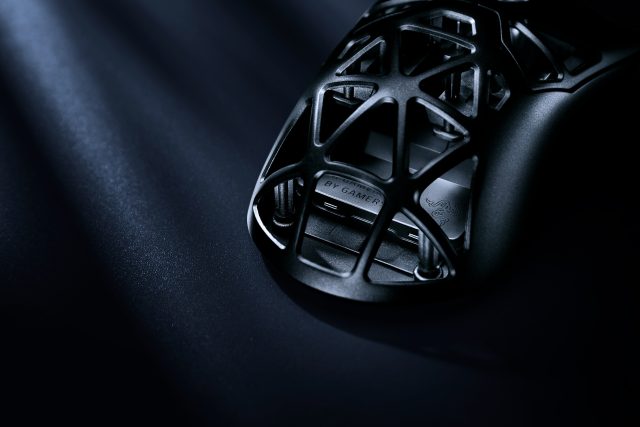
Enlarge (credit: Razer)
There are a lot of cookie-cutter mice that, though made by different manufacturers, have the same shapes and features but rely on mild changes in color or sensor specs to differentiate themselves. So when Razer announced the Viper Mini Signature Edition (SE) today, a wireless mouse that looks like it forgot to get dressed, we took notice.
The Viper Mini SE uses a magnesium alloy chassis "exoskeleton," as Razer describes it. Lines of dark gray stretch across the mouse's palm area, creating a web-like design and bold, gaping holes. Razer's using an extreme take on the honeycomb design, which has holes drilled into a mouse's chassis to reduce weight. However, the typical honeycomb mouse, like the Glorious Model I, has many more holes that are smaller, while the Viper Mini SE has holes that are so big, it looks like you could poke your finger through them.

It'll be easy for dust to fall into those openings. (credit: Razer)
At first look, I was immediately concerned about the mouse's durability. Despite what Razer claims, I still think I'm more likely to break a mouse with 18 holes in it than one with none. Large openings can also attract dust and debris, but bigger holes should make the mouse easier to clean with an air blower than a honeycomb mouse topped with more, smaller openings.
Read 8 remaining paragraphs | Comments

Enlarge (credit: Razer)
There are a lot of cookie-cutter mice that, though made by different manufacturers, have the same shapes and features but rely on mild changes in color or sensor specs to differentiate themselves. So when Razer announced the Viper Mini Signature Edition (SE) today, a wireless mouse that looks like it forgot to get dressed, we took notice.
The Viper Mini SE uses a magnesium alloy chassis "exoskeleton," as Razer describes it. Lines of dark gray stretch across the mouse's palm area, creating a web-like design and bold, gaping holes. Razer's using an extreme take on the honeycomb design, which has holes drilled into a mouse's chassis to reduce weight. However, the typical honeycomb mouse, like the Glorious Model I, has many more holes that are smaller, while the Viper Mini SE has holes that are so big, it looks like you could poke your finger through them.

It'll be easy for dust to fall into those openings. (credit: Razer)
At first look, I was immediately concerned about the mouse's durability. Despite what Razer claims, I still think I'm more likely to break a mouse with 18 holes in it than one with none. Large openings can also attract dust and debris, but bigger holes should make the mouse easier to clean with an air blower than a honeycomb mouse topped with more, smaller openings.
Read 8 remaining paragraphs | Comments
February 03, 2023 at 02:06AM

Post a Comment